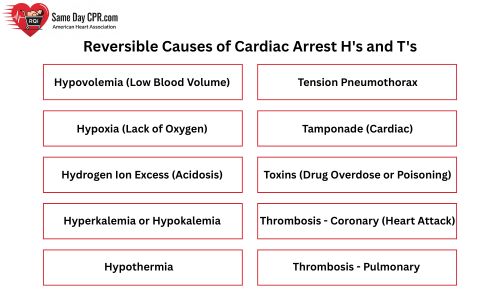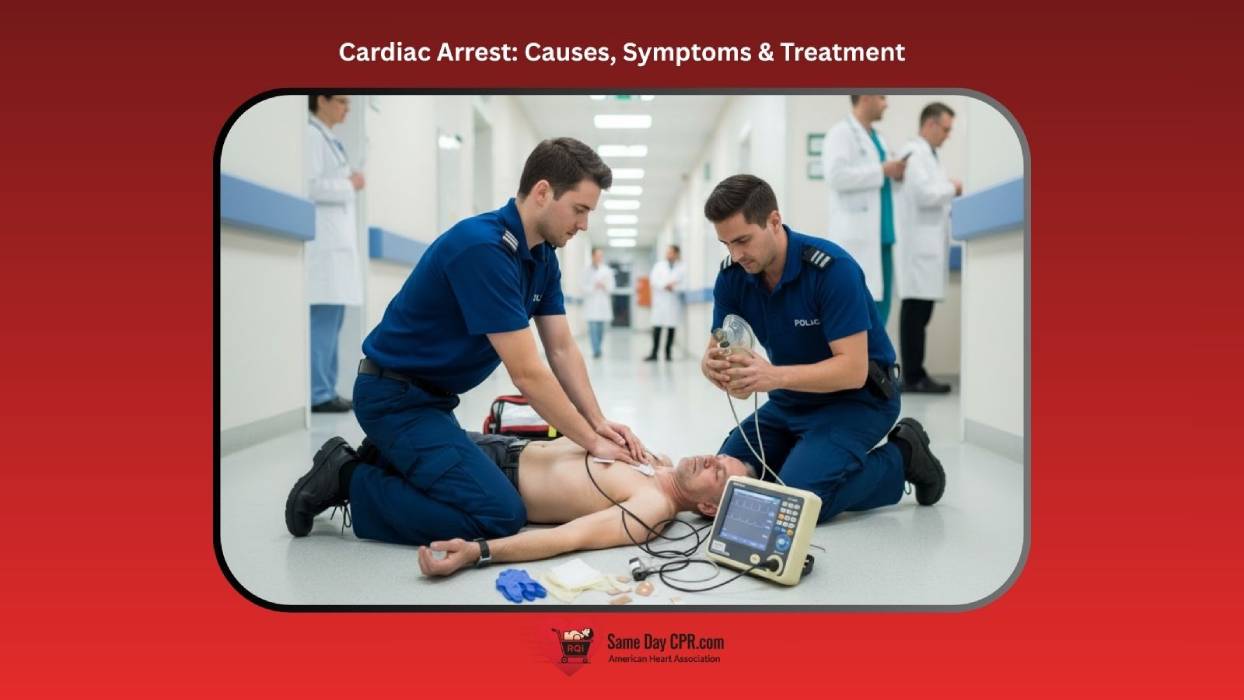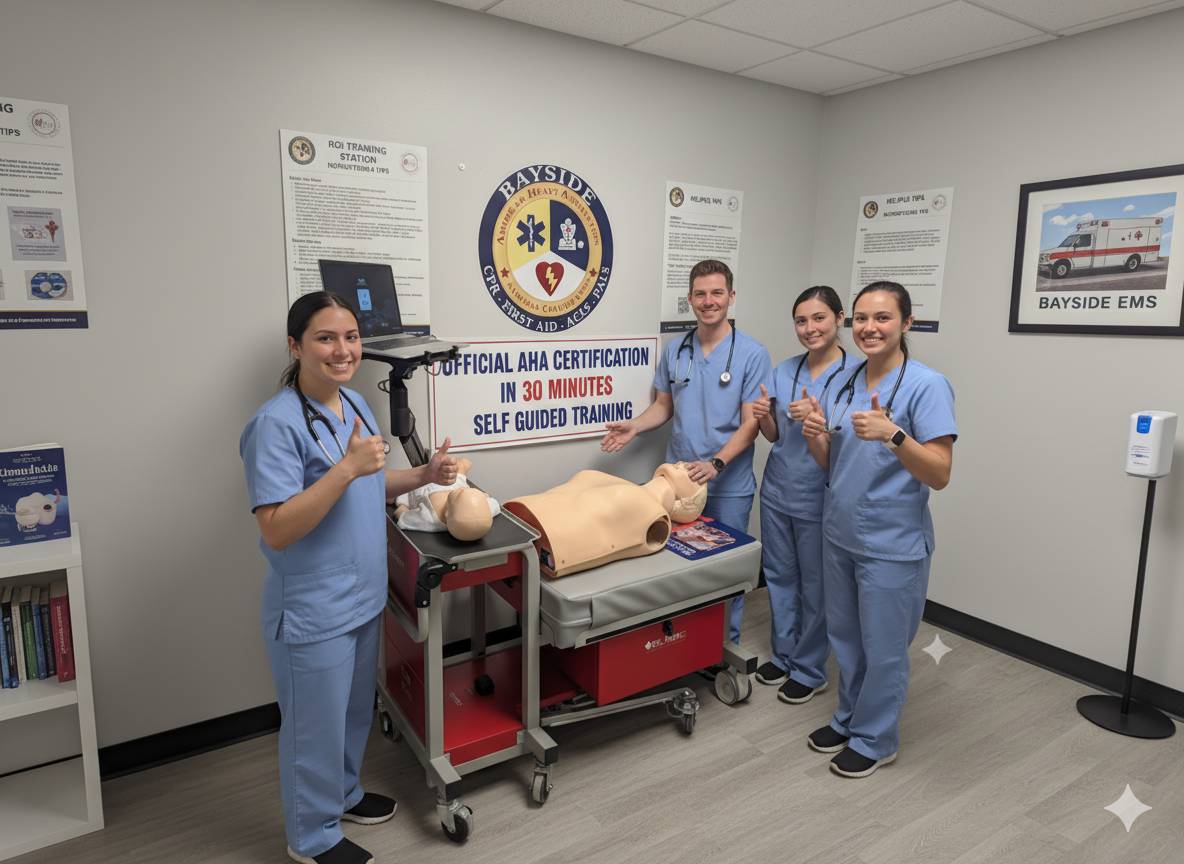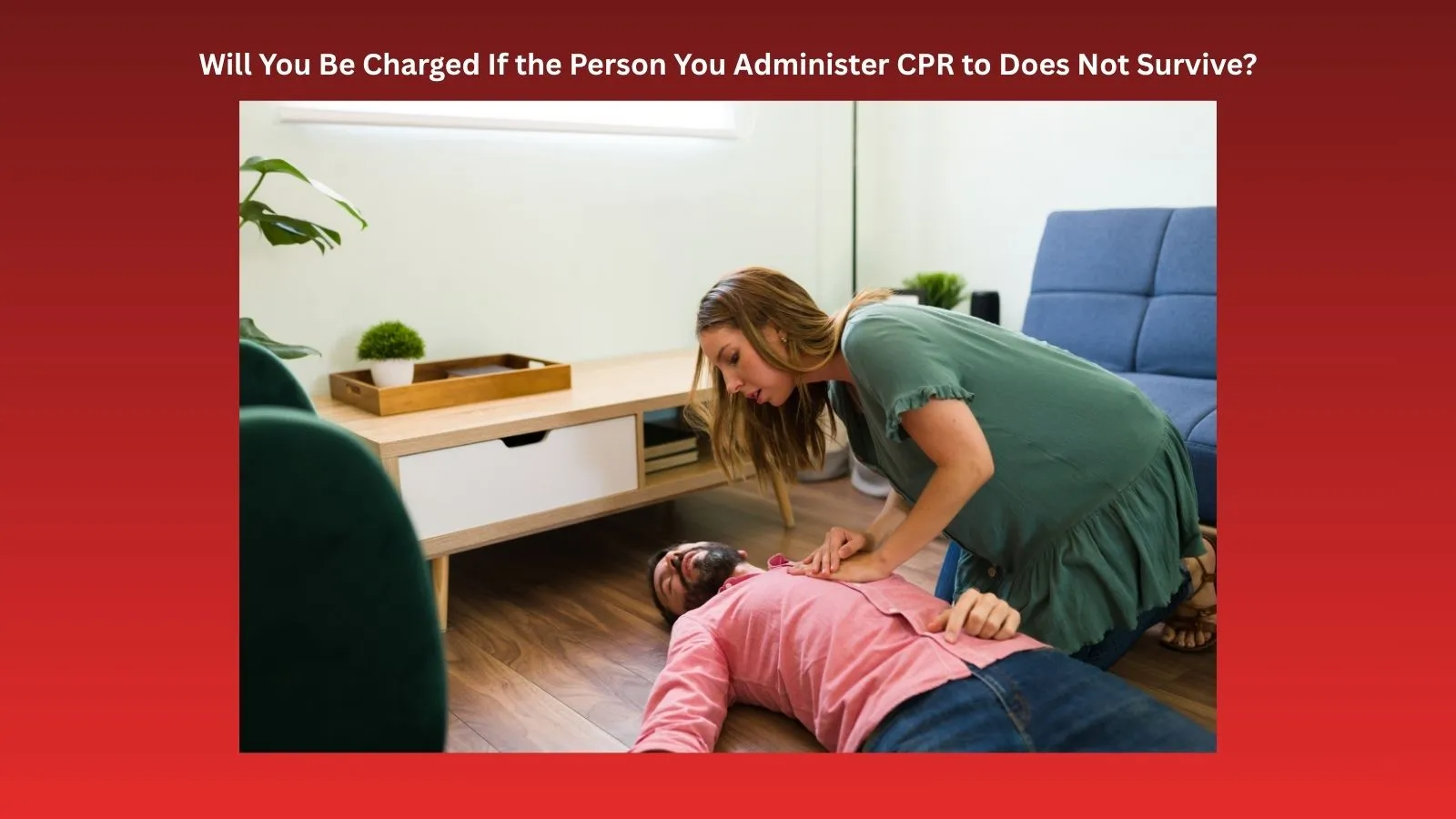When someone goes into cardiac arrest, doctors and rescuers quickly think about the “H’s and T’s.” These are common, reversible causes that can make the heart stop, whether it is beating in a dangerous rhythm like ventricular tachycardia or ventricular fibrillation, or showing no pulse at all, as in asystole (flatline) or pulseless electrical activity. Why are they important? Because finding and treating one of these causes can bring the heart back. What do the H’s and T’s stand for? The H’s include problems like low oxygen, low blood volume, very low or high potassium, low body temperature, and too much acid in the blood. The T’s cover things such as blood clots in the lungs or heart, cardiac tamponade, tension pneumothorax, and toxins. How do they help in real life? They act like a mental checklist for rescuers, making sure no possible cause is missed during those critical moments.
H’s Causes of Reversible Cardiac Arrest
The H’s are common problems that can make the heart stop, but you can often fix them. Knowing them helps rescuers act fast and save lives.
1. Hypovolemia (Low Blood Volume)
Hypovolemia happens when your body loses too much blood or fluids, leaving your organs starved for the liquid they need to work properly. Acting fast is important because your organs need the right amount of fluid to keep you feeling well and stay safe.
- Symptoms: You might feel dizzy, weak, thirsty, or notice your heart racing (tachycardia), and your skin could look pale or feel cool and clammy.
- Causes: It can happen after heavy bleeding, severe dehydration, or conditions that make your body lose fluids quickly, like vomiting or diarrhea.
- Diagnosis: Doctors usually check your blood pressure, heart rate, and do blood tests to figure out if your volume is low.
- Treatment: It focuses on replacing the lost fluids with water, salts, or blood through an IV (intravenous) and addressing the reason your body lost fluids in the first place.
2. Hypoxia (Lack of Oxygen)
Hypoxia happens when your body or a part of it does not get enough oxygen, which your organs need to work properly.
- Symptoms: You might feel short of breath, tired, dizzy, or have a fast heartbeat, and your lips or fingers could look bluish.
- Causes: It can be caused by problems with your lungs, heart, or even being at a high altitude where the air has less oxygen.
- Diagnosis: Doctors check oxygen levels with a small device on your finger called a pulse oximeter and may do blood tests or imaging to see what is going on.
- Treatment: It focuses on getting more oxygen into your body, sometimes with a mask or tube, and fixing the underlying problem so your organs can get the oxygen they need to function well.
3. Hydrogen Ion Excess (Acidosis)
Acidosis happens when your body has too many hydrogen ions, which makes your blood more acidic than normal.
- Symptoms: You might feel tired, confused, short of breath, or notice your heartbeat feels fast or irregular.
- Causes: It can happen if your body produces too much acid, your kidneys or lungs aren’t working properly, or you lose too much base from vomiting or diarrhea.
- Diagnosis: Doctors check your blood with tests that measure pH and other chemicals to see if it is too acidic.
- Treatment: It focuses on fixing the cause, such as giving fluids, medications, or helping your lungs or kidneys remove the extra acid, so your body can get back to a healthy balance.
4. Hyperkalemia or Hypokalemia (Too Much or Too Little Potassium)
Potassium is important for your muscles, nerves, and heart to work properly, and having too much or too little can cause problems. If your potassium is too high, called hyperkalemia, you might feel weak, tired, or notice your heart beating irregularly. If it’s too low, called hypokalemia, you could feel tired, have muscle cramps, or your heartbeat might also become irregular.
- Causes: It includes kidney problems, certain medications, dehydration, or not getting enough potassium in your diet.
- Diagnosis: Doctors check potassium levels with a simple blood test and sometimes monitor your heart with an ECG.
- Treatment: It depends on the problem, adding or reducing potassium safely, using medications, or addressing the underlying cause, to keep your body working smoothly.
5. Hypothermia (Low Body Temperature)
Hypothermia happens when your body loses heat faster than it can produce it, causing your temperature to drop below 30 C (86 F) normal.
- Symptoms: You might feel very cold, shiver uncontrollably, move slowly, or feel confused and sleepy.
- Causes: It can happen if you stay in cold weather too long, fall into cold water, or wear wet clothes in low temperatures.
- Diagnosis: Doctors check your body temperature and look for signs like slow breathing or a weak pulse.
- Treatment: Focuses on warming your body safely with blankets, warm fluids, or special heating devices, and preventing further heat loss so your organs can work properly and you can recover.
T’s Causes of Reversible Cardiac Arrest
The T’s are common causes that can make the heart stop, but you can often fix them. Knowing them helps rescuers act fast and save lives.
1. Tension Pneumothorax
Tension pneumothorax happens when air builds up in the space around your lungs and puts pressure on your chest, making it hard to breathe and affecting your heart.
- Symptoms: You might feel sudden shortness of breath, chest pain, a rapid heartbeat, or notice one side of your chest looks bigger or moves differently when you breathe.
- Causes: It can happen after a serious chest injury, certain medical procedures, or in people with lung disease.
- Diagnosis: Doctors usually diagnose it by checking your breathing, heart, and sometimes using imaging like an X-ray.
- Treatment: It is urgent and focuses on releasing the trapped air quickly, often with a needle or tube, so your lungs can expand and your body can get the oxygen it needs.
2. Tamponade (Cardiac)
Cardiac tamponade happens when fluid builds up around the heart, putting pressure on it and making it hard for the heart to pump blood effectively.
- Symptoms: You might feel short of breath, dizzy, or unusually tired, and your heartbeat could feel fast or irregular.
- Causes: It can happen after chest injuries, heart surgery, infections, or certain medical conditions.
- Diagnosis: Doctors often check for it using physical exams, ultrasound, or other imaging to see the fluid around the heart.
- Treatment: Focuses on removing the excess fluid quickly, usually with a procedure called pericardiocentesis, so the heart can pump normally and your body gets the blood and oxygen it needs.
3. Toxins (Drug Overdose or Poisoning)
Toxins affect your body when you take too much of a drug or are exposed to harmful chemicals, making it hard for your organs to work properly.
- Symptoms: You might feel dizzy, nauseous, confused, or notice trouble breathing, a rapid heartbeat, or unusual sweating.
- Causes: It includes accidental or intentional overdoses, certain medications, or exposure to poisons at home or work.
- Diagnosis: Doctors usually check your vital signs, do blood or urine tests, and sometimes use imaging to see how your body is affected.
- Treatment: Focuses on removing or neutralizing the toxin, supporting your organs with fluids or medications, and keeping you safe while your body recovers.
4. Thrombosis – Coronary (Heart Attack)
Coronary thrombosis happens when a blood clot blocks one of the arteries supplying your heart, causing a heart attack.
- Symptoms: You might feel chest pain or pressure, shortness of breath, nausea, or lightheadedness, and sometimes pain spreads to your arm, jaw, or back.
- Causes: It can happen when arteries are narrowed by cholesterol buildup, injury, or other heart conditions.
- Diagnosis: Doctors usually check with an ECG (electrocardiogram), blood tests, and imaging to see where the blockage is.
- Treatment: Focuses on restoring blood flow quickly, using medications, procedures like angioplasty, or surgery, so your heart can get oxygen and continue working properly.
5. Thrombosis – Pulmonary (Pulmonary Embolism)
Pulmonary thrombosis, also called a pulmonary embolism, happens when a blood clot blocks an artery in your lungs, making it hard for blood and oxygen to reach your body.
- Symptoms: You might feel sudden shortness of breath, chest pain that may get worse when you breathe, a rapid heartbeat, or cough up blood.
- Causes: It can happen if a clot forms in your legs or elsewhere and travels to your lungs, often after surgery, long periods of sitting, or certain medical conditions.
- Diagnosis: Doctors usually check with imaging, like a CT (computed tomography) scan and blood tests, to find the clot.
- Treatment: It focuses on breaking up or preventing more clots with medications or procedures, helping your lungs and heart work properly again.
Why Is It Important to Treat the Reversible Causes of Cardiac Arrest?
Treating the reversible causes of cardiac arrest is crucial because these are problems you can fix, and fixing them can save a life. While CPR and defibrillation keep the heart and brain alive for a short time, they do not solve the underlying issue that caused the arrest. Identifying and addressing causes like low oxygen, abnormal heart rhythms, or severe bleeding gives the patient a real chance to recover. Acting quickly on these issues makes resuscitation more effective and increases the likelihood that the person will survive and return to normal life. It’s not just about keeping someone alive for a few minutes; it’s about giving them a true second chance.
Also Read: Resuscitation Triangle Roles in an ACLS High-Performance Team
The Key to Saving Lives: Treating Reversible Causes
In short, knowing the H’s and T’s gives rescuers a clear guide. These common causes of cardiac arrest are often reversible, and acting quickly can truly save a life. Treating problems like low oxygen, fluid loss, abnormal potassium, or blood clots doesn’t just support the heart for a moment; it gives the person a real chance to recover and return to normal life. By remembering and checking each possible cause, doctors and first responders can make resuscitation more effective and increase the odds of a successful outcome. Understanding these causes turns a critical situation into an opportunity to help someone survive and thrive.








